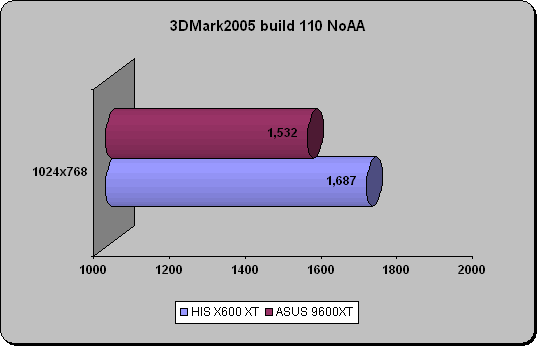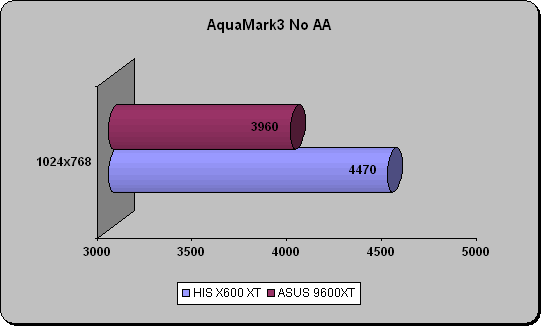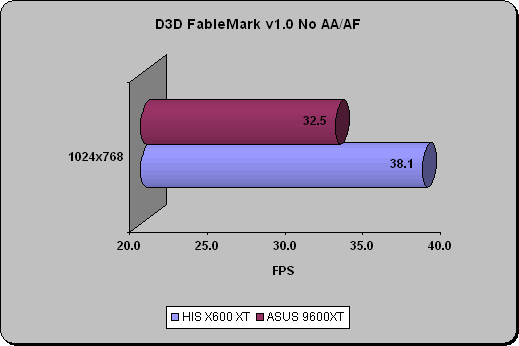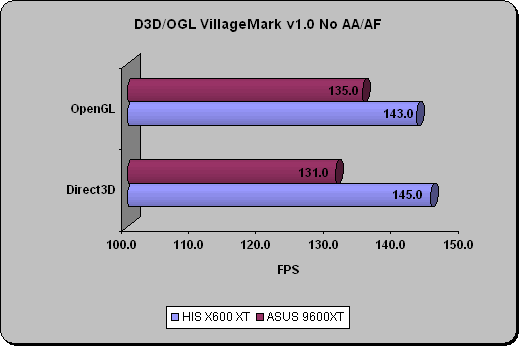HIS Excalibur X600 XT VIVO Edition
Synthetic Testing
Our Test Systems:
- P4 3.4 Extreme Edition @ 3.0Ghz, ASUS P5GD2 Premium Motherboard, 1GB Crucial PC2-4300 (4-8-3-3) Memory, Western Digital WD800JD SATA HDD, HIS X600 XT Graphics (500-Core/378-Mem)
- P4 3.0E @ 3.0 Ghz, ABIT AI7 Motherboard, 1GB Kingston PC3200 (2.5-8-3-3) Memory, Maxtor 40GB HDD, ASUS 9600XT Graphics
Our tests were run on a fresh install of Windows XP SP2 with DirectX 9.0c. We used ATI’s Catalyst 4.12 drivers for both graphics cards. All tests were run 3 times and the average of the three runs was used to give you the numbers given in our graphs and charts.
Futuremark 3DMark2001 SE build 330:
3DMark2001 was run at the default settings of 1024×768 and 32 bit color.

Futuremark 3DMark05 build 110:
3DMark05 was run at the default settings of 1024×768.

Aquamark 3:
The default free benchmark of Aquamark 3 was used at standard settings.

D3DFablemark v1.0:
D3DFablemark was used to demonstrate the graphics cards stencile rendering ability. The default benchmark settings of 1024×768 were used.

D3D/OGL Villagemark v1.0:
Villagemark comes in two versions; Direct 3D and Open GL. For both benchmarks, the default settings of 1024×768 were used.

Synthetic Testing Summary:
Now that you have seen the results of all our synthetic testing, we can draw a few conclusions. One thing that we noticed was how the two 3DMarks show opposite results. This gives us the impression that the AGP 9600XT is better (or just as good) at rendering the older DX7/8 graphics and the new PCI-E core is geared more towards the new DX9 rendering which is stressed in 3DMark05.
Aquamark 3, Fablemark, and the Villagemarks show the higher clock speeds of the HIS X600 XT taking charge.

Comments are closed.